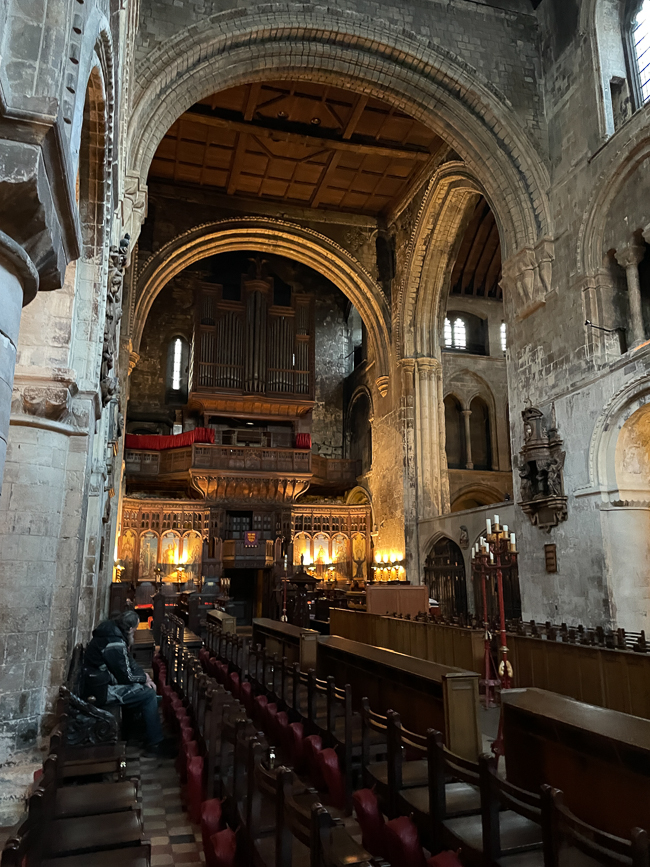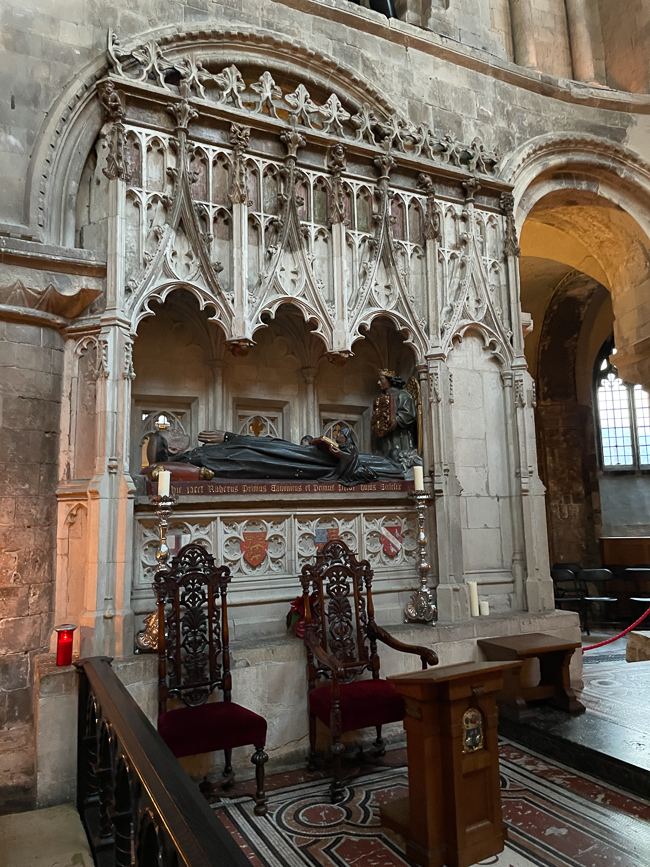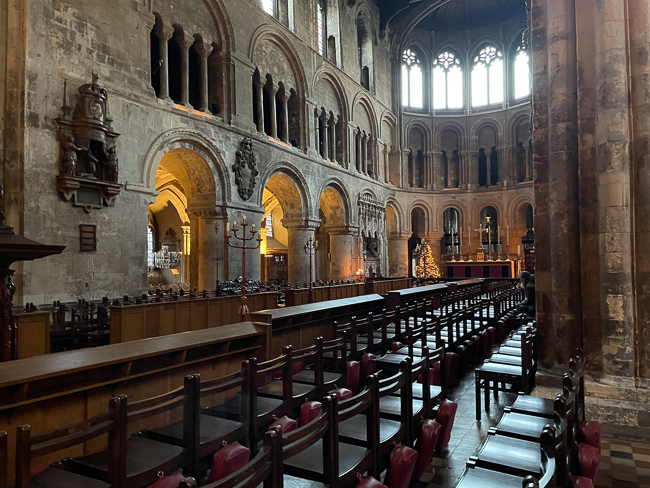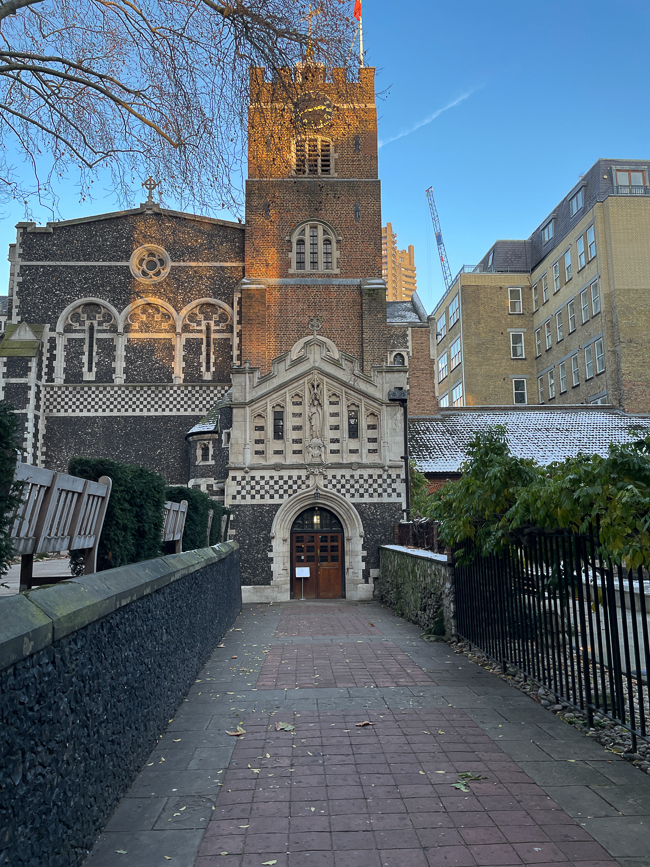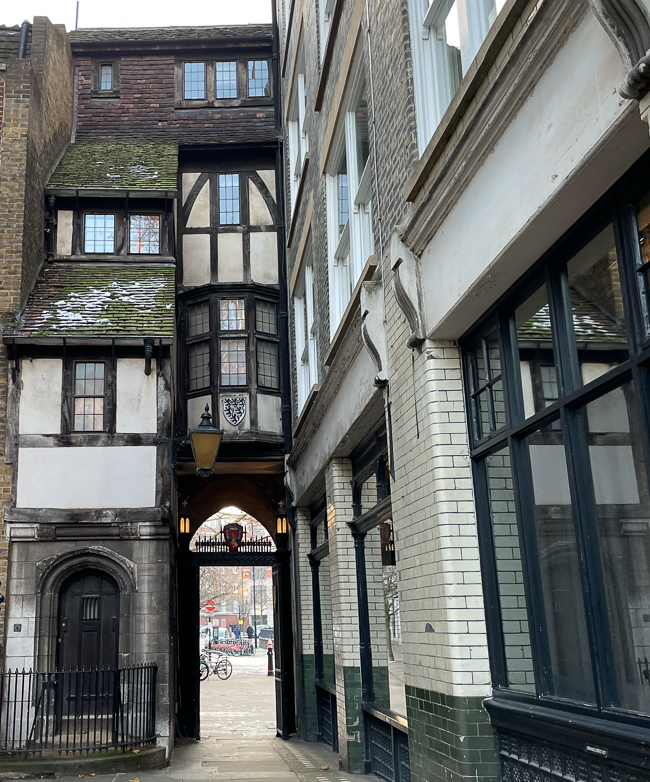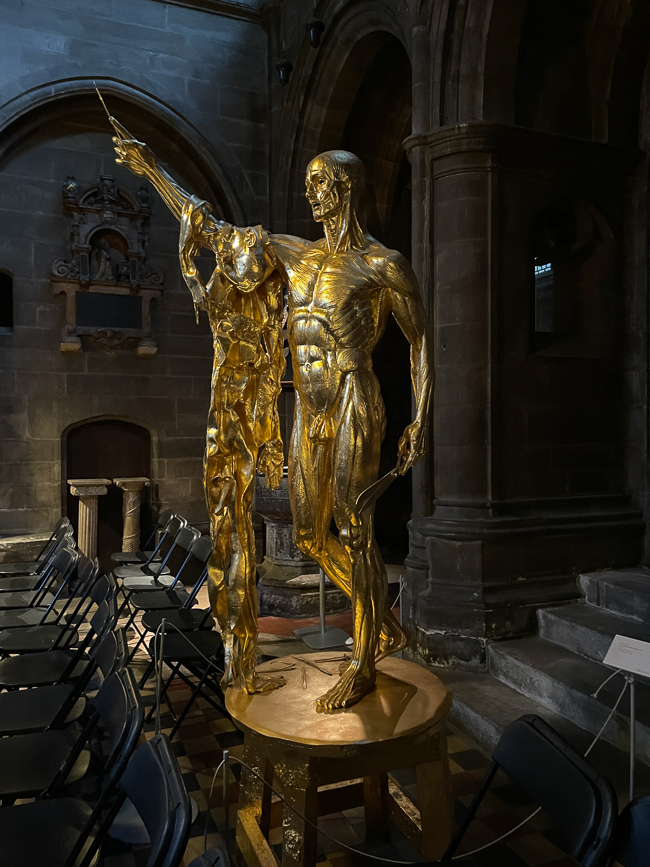December 2022
We walked into this churchyard because we were looking for a plague pit, we found so much more.
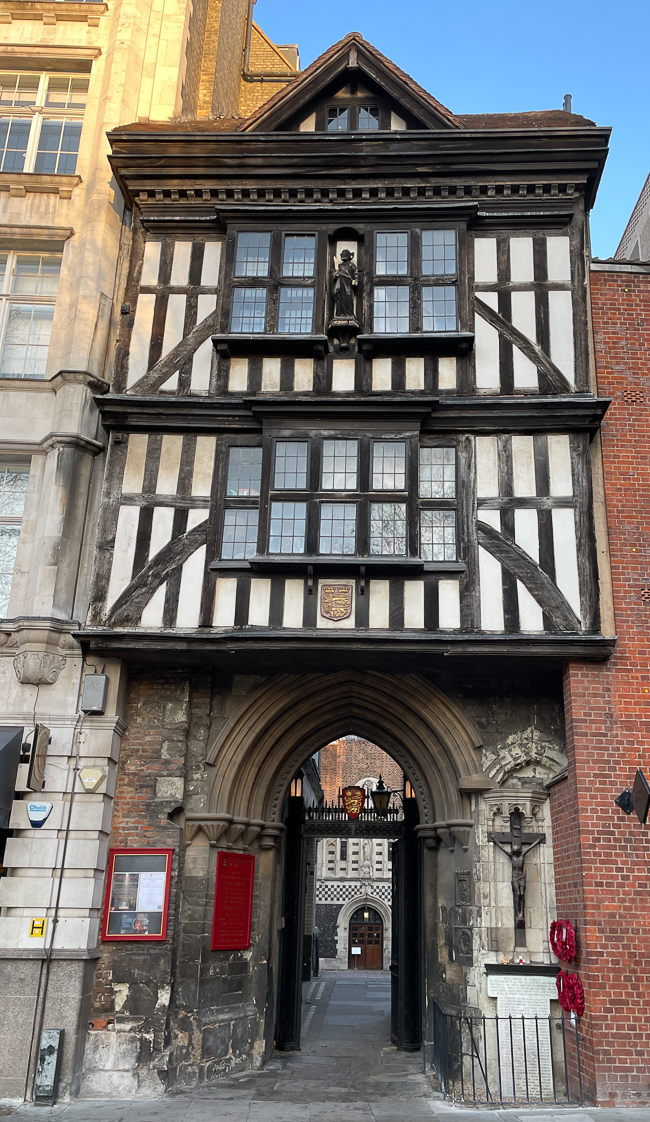
St Bartholomew half-timbered, late 16th-century, Tudor frontage built on the older (13th-century) stone arch
St. Bartholomew Church is very intriguing from the street, and one can’t help but want to walk through that arched doorway even if you didn’t know what lay behind it.
The building was founded as an Augustinian priory in 1123 by a man named Rahere. While in Italy, Rahere had a vision, so he traveled to London, and with the help of servants and children, they gathered stones from all over London to build the structure. The church is one of the oldest in London.
Having escaped the Great Fire of London of 1666, the church fell into disrepair and was occupied by squatters in the 18th century. The Lady chapel at the east end was used for commercial purposes and this is where Benjamin Franklin worked for a year as a journeyman printer in the 1720s. The north transept was also formerly used as a blacksmith’s forge.
The church was restored in stages in the 1890s. The Priory Church was one of the few City churches to escape damage during the Blitz and, in 1941, was where the 11th Duke of Devonshire and Deborah Mitford were married.
*
The Great Plague of London saw the Black Death decimate over 15% of the city’s population (estimated at 100,000 people) between 1665 and 1666. During this scourge piles of bodies were tossed into deep pits in unconsecrated ground. Over the centuries people have begun to respect the anonymous inhabitants of these pits. There are efforts to map the pits.
As you enter the church you will find ‘Exquisite Pain’ by Damien Hirst.
Little is known about Saint Bartholomew other than he was one of the twelve Apostles. Tradition holds that after the Resurrection of Christ, he preached in India and Armenia, and was flayed alive in Armenia by order of a local king.
Hirst’s sculpture shows Bartholomew flayed alive, a scalpel in one hand and shears in the other, and carrying his own skin over his right arm. Hirst said the inspiration for his St Bartholomew came “from woodcuts and etchings I remember seeing when I was younger. As he was a martyr who was skinned alive, he was often used by artists and doctors to show human anatomy.” Hirst’s catholic upbringing exposed him to the legends of the saints “they are great stories and it is about… those guys… who all met these terrible ends…,” “everyone is a martyr really in life. So I think you can use that as an example of your own life, just that kind of involvement with the world. Just trying to find out what your life actually amounts to, in the end.” “I added the scissors because I thought Edward Scissorhands was in a similarly tragic yet difficult position, “it has the feel of a rape of the innocents about it.”
It is said when you travel in Italy never pass a church without going in because of the great art work you will find. I find this just as true here at Saint Bartholomew the Great.
